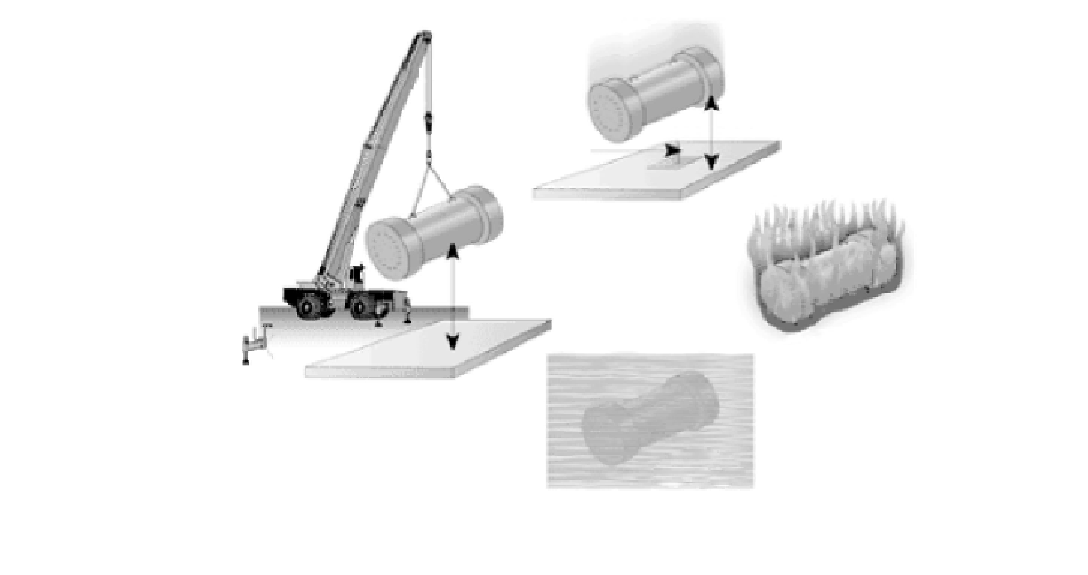Environmental Engineering Reference
In-Depth Information
PUNCTURE
FREE DROP
40 Inch Deep
6'' Dia
Steel Shaft
THERMAL
30 Feet Deep
IMMERSION
Fully Engulfing Fire at
1,475
°
F for 30 Minutes
3 Feet
Underwater
for 30 Minutes
Figure 8.8
Transportation casks test requirements (Courtesy of Department of Energy)
According to the NRC, “about 3 million packages of radioactive materials are
shipped each year in the United States, either by highway, rail, air, or water”
(USNRC 2008b). These shipments include isotopes for use in diagnosing and
treating diseases and small amounts of radioactive material for use in research.
For example, researchers in agriculture, biology, chemistry, medicine, and many
other fields use tiny amounts of radioactive material as tracers in their research.
Many radioactive materials are used for industrial purposes such as nondestruc-
tive testing of welds, gages to help control thickness of paper or metal during
manufacturing, and components of some smoke detectors. Larger amounts of
radioactive material are used to sterilize medical supplies or to kill insects, bacte-
ria, or mold in some foods and spices. Most of these uses of radioactive materials
generate small amounts of contaminated waste, typically called low-level radioac-
tive waste, that must be shipped to a designated disposal facility. Shipments of all
of these types of radioactive materials are jointly regulated by the NRC through
10 CFR 71, and the Department of Transportation through 49 CFR 107, 171-180,
and 390-397.
Acknowledgments
Three nuclear engineering students at Purdue University were instrumental in
gathering and organizing the information presented in this chapter. They were




Search WWH ::

Custom Search